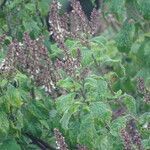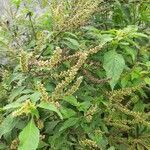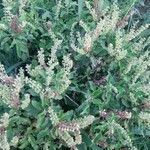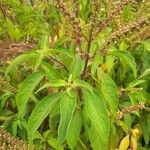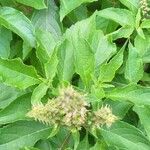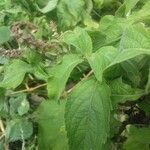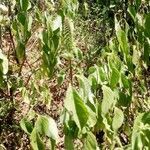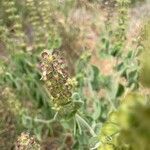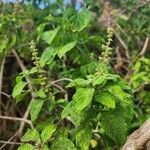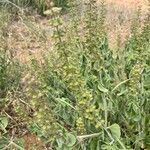| Therapeutic use
|
Anti-anxiety agents (aerial part), Anti-bacterial agents (aerial part), Antifungal agents (aerial part), Antineoplastic agents (aerial part), Antioxidants (aerial part), Insecticides (aerial part), Insecticides (flower), Abdominal pain (leaf), Amenorrhea (leaf), Amnesia (leaf), Analgesics (leaf), Anemia (leaf), Anorexia (leaf), Anthelmintics (leaf), Anti-bacterial agents (leaf), Anticoagulants (leaf), Anticonvulsants (leaf), Antiemetics (leaf), Antifungal agents (leaf), Antineoplastic agents (leaf), Antioxidants (leaf), Antipyretics (leaf), Antirheumatic agents (leaf), Antitussive agents (leaf), Aphrodisiacs (leaf), Brain diseases (leaf), Cardiotonic agents (leaf), Common cold (leaf), Conjunctivitis (leaf), Constipation (leaf), Contraceptive agents (leaf), Cough (leaf), Diabetes mellitus (leaf), Diarrhea (leaf), Digestive system diseases (leaf), Dysmenorrhea (leaf), Dysphonia (leaf), Ear diseases (leaf), Earache (leaf), Disorder of ejaculation (leaf), Eye diseases (leaf), Fever (leaf), Flatulence (leaf), Gingivitis (leaf), Gonorrhea (leaf), Headache (leaf), Hiccup (leaf), Hypersensitivity (leaf), Immunomodulation (leaf), Infertility, female (leaf), Inflammation (leaf), Insect bites and stings (leaf), Insecticides (leaf), Leprosy (leaf), Liver diseases (leaf), Malaria (leaf), Nasal disease (leaf), Pain (leaf), Paralysis (leaf), Parasympatholytics (leaf), Pruritus (leaf), General tonic for rejuvenation (leaf), Rhinitis (leaf), Scorpion stings (leaf), Skin diseases (leaf), Skin diseases, infectious (leaf), Snake bites (leaf), Sprains and strains (leaf), Toothache (leaf), Typhoid fever (leaf), Vomiting (leaf), Wound healing (leaf), Body odor (leaf), Rheumatoid arthritis (leaf), Antipyretics (root), Antitussive agents (root), Chest pain (root), Common cold (root), Typhoid fever (root), Ulcer (root), Analgesics (seed), Antirheumatic agents (seed), Burns (seed), Diarrhea (seed), Dysentery (seed), Dysphonia (seed), Eye diseases (seed), Gonorrhea (seed), Headache (seed), Heat stroke (seed), Neuralgia (seed), Paralysis (seed), Postnatal care (seed), General tonic for rejuvenation (seed), Urination disorders (seed), Insecticides (shoot), Antihypertensive agents (stem), Headache (unspecified), Ache(Stomach) (unspecified), Aftosa (unspecified), Anesthetic (unspecified), Anodyne (unspecified), Antiseptic (unspecified), Bactericide (unspecified), Bite(Snake) (unspecified), Blennorrhagia (unspecified), Catarrh (unspecified), Cold (unspecified), Colic (unspecified), Cough (unspecified), Diaphoretic (unspecified), Digestive (unspecified), Dysentery (unspecified), Dysmenorrhea (unspecified), Ejaculation (unspecified), Emetic (unspecified), Epistaxis (unspecified), Fever (unspecified), Funereal (unspecified), Inflammation (unspecified), Repellant(Insect) (unspecified), Intoxicant (unspecified), Lumbago (unspecified), Nausea (unspecified), Neuralgia (unspecified), Ophthalmia (unspecified), Paralysis (unspecified), Piles (unspecified), Pneumonia (unspecified), Purgative (unspecified), Rheumatism (unspecified), Scabies (unspecified), Stimulant (unspecified), Stomatitis (unspecified), Toothache (unspecified), Vermifuge (unspecified), Witchcraft (unspecified), Arthritis (unspecified), Back (unspecified), Conjunctivitis (unspecified), Delirium (unspecified), Dentifrice (unspecified), Flu (unspecified), Fumigation (unspecified), Gonorrhea (unspecified), Itch (unspecified), Sudorific (unspecified), Urogenital (unspecified), Vertigo (unspecified), Ache(Ear) (unspecified), Bronchitis (unspecified), Abdominal pain (unspecified), Analgesics (unspecified), Anthelmintics (unspecified), Anti-bacterial agents (unspecified), Antiemetics (unspecified), Antifungal agents (unspecified), Anti-infective agents, local (unspecified), Antioxidants (unspecified), Antipyretics (unspecified), Antirheumatic agents (unspecified), Antitubercular agents (unspecified), Antitussive agents (unspecified), Central nervous system diseases (unspecified), Demulcents (unspecified), Digestive system diseases (unspecified), Diuretics (unspecified), Dyspepsia (unspecified), Earache (unspecified), Expectorants (unspecified), Flatulence (unspecified), Hemorrhoids (unspecified), Hemostatics (unspecified), Lipid peroxidation (unspecified), Low back pain (unspecified), Malaria (unspecified), Nervous system diseases (unspecified), Parasympatholytics (unspecified), General tonic for rejuvenation (unspecified), Skin diseases (unspecified), Stomatitis, aphthous (unspecified), Typhoid fever (unspecified), Urinary calculi (unspecified), Urination disorders (unspecified), Vomiting (unspecified), Anthelmintics (whole plant), Anti-bacterial agents (whole plant), Antiemetics (whole plant), Antifungal agents (whole plant), Anti-infective agents, local (whole plant), Antirheumatic agents (whole plant), Common cold (whole plant), Constipation (whole plant), Cough (whole plant), Demulcents (whole plant), Digestive system diseases (whole plant), Diuretics (whole plant), Disorder of ejaculation (whole plant), Fever (whole plant), Flatulence (whole plant), Gonorrhea (whole plant), Headache (whole plant), Hemostatics (whole plant), Neuralgia (whole plant), Neurology (whole plant), General tonic for rejuvenation (whole plant), Rhinitis (whole plant), Stomatitis, aphthous (whole plant), Urination disorders (whole plant)
|
